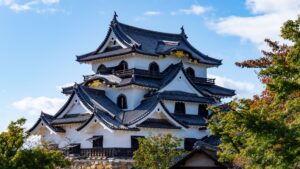Museum Meiji-Mura: Japan Red Cross Society Central Hospital, A Symbol of Relief Work in Peacetime
One of the wards of the Japanese Red Cross Central Hospital, delicately adorned with its exquisite exterior and state-of-the-art facilities, has been relocated to the Museum Meiji-Mura. Sunlight streams in through the glass wall of the corridor, and the long, straight, boarded corridor maintains a sense of pristine cleanliness. This wooden architecture exudes the esteemed ambiance reminiscent of the new Meiji era(1868-1912).
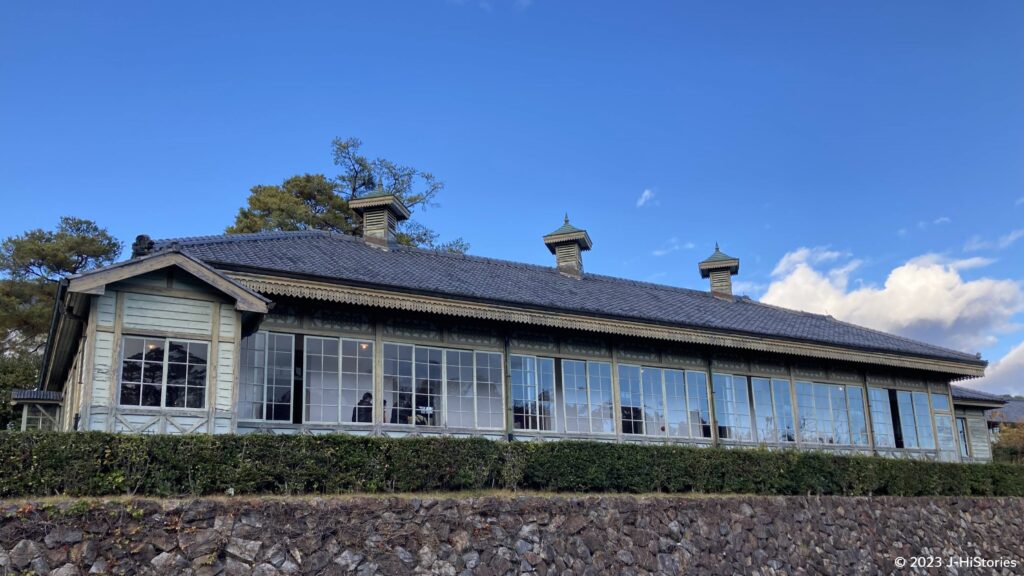
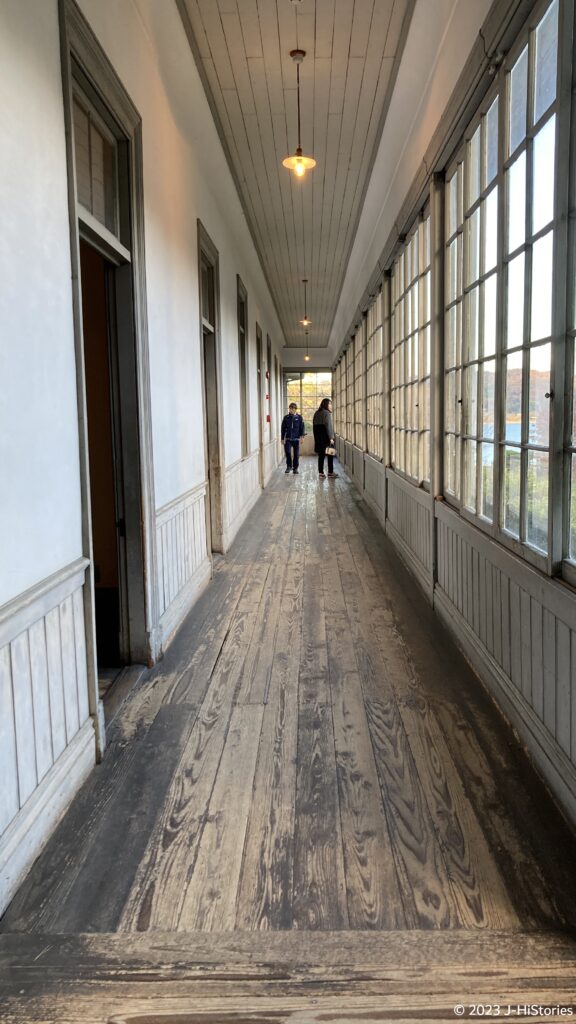
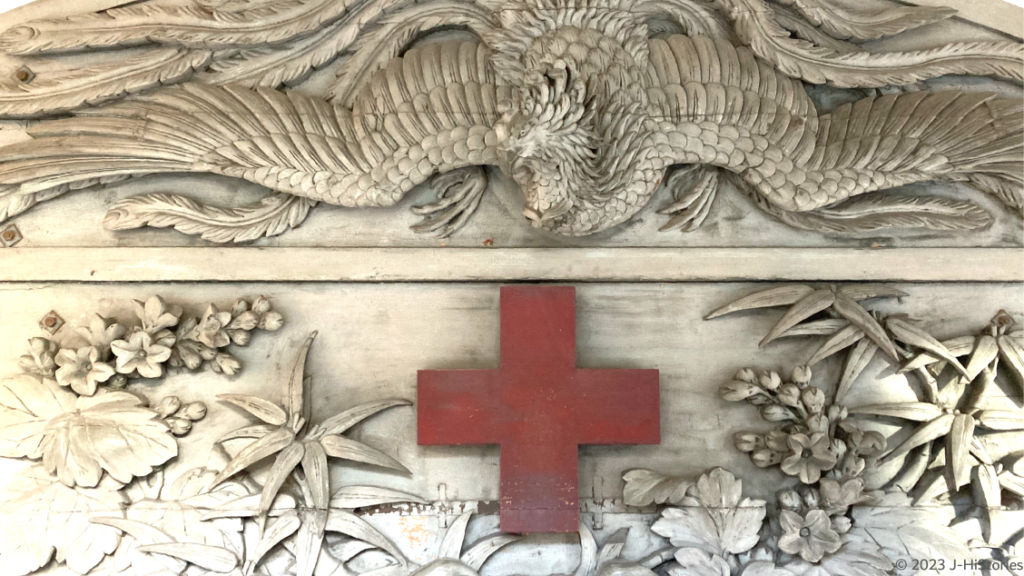
Upon entering the building, visitors are greeted by an ornate frame adorned with a raised relief of paulownia wood, bamboo, and a phoenix, which is the emblem of the Japanese Red Cross Society. The phoenix guards eggs and chicks, holding the symbol of the Red Cross under its wings spread wide. This plaque is based on the design of Empress Shôken’s kanzashi, or Japanese hairpin, honoring her significant contributions to the development of the Japanese Red Cross. In bygone days, it used to adorn the gable of the building.
Empress Shôken paved the path for relief work in peacetime
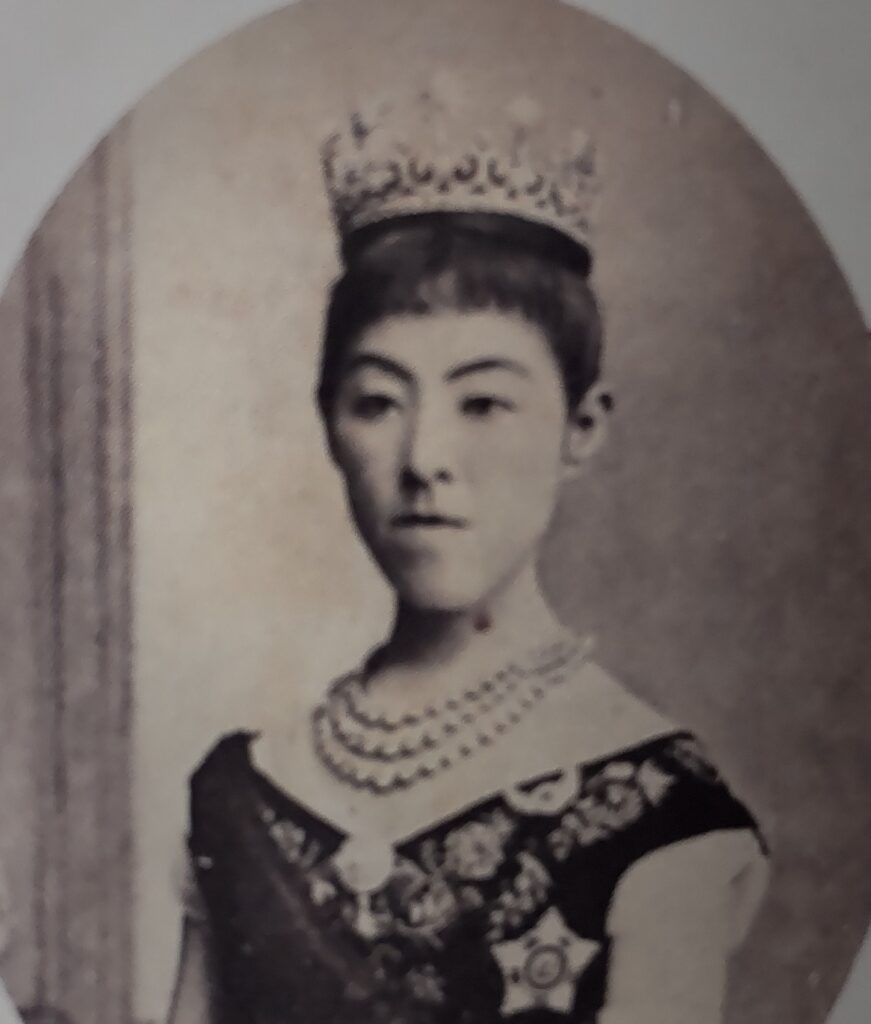
(@Museum Meiji-Mura)
Empress Shôken (昭憲皇太后), the posthumous title of Empress Haruko (1849-1914, 美子皇后), was a visionary empress who led Japan into modernity during the new Meiji era. For example, she recognized and promoted the importance of relief work in peacetime though, at the time, the Red Cross Society was only supposed to provide wartime relief.
- Regardless of enemy or ally,
- Not only in wartime but also in peacetime
Her aspirations continue today as The Empress Shôken Fund, the world's oldest international humanitarian fund, which has existed for more than 100 years and continues to provide humanitarian assistance to people around the world.
It was established in 1912 with 100,000 yen (equivalent to 350 million yen today), a gift from Empress Shôken, to support the peacetime projects (peacetime relief, prevention of epidemics and disaster relief, etc.) of Red Cross societies in various countries. Since the first distribution in 1921, a total of 2.3 billion yen (CHF 15,939,535) has been distributed to 171 countries and regions. (Announced in April 2023.) The funds have been widely used for tuberculosis prevention, disaster relief, and, more recently, climate change mitigation. Its activities continue to be supported by its interest and donations from the Japanese Imperial Family and other donors, without diminishing the source funds. Empress Shôken's wish to spread peace aid throughout the world is still alive and is getting to be more important.
Empress Shôken, a woman of dignity, royalty, and brilliance
Empress Shôken was born into the Ichijo family, an old noble family (called "Kazoku" after the Meiji Restoration). In 1869, she became the empress of Emperor Meiji, who promoted modernization as the ruler of a modern nation. She was a rare woman who learned, thought, and acted to fulfill her mission, seeking her role as empress by asking herself, "What should an empress be like in the new Meiji era? Notable among the Empress's efforts were welfare, especially several supports and her activities to the Red Cross Society under the Empress's benevolence and charity, sericulture, and girls' education.
The Waka, a traditional Japanese poem, of Empress Shôken:
Without polishing,
A gem or a mirror is useless.
The path of learning should be the same.
conveys the message of her advocacy of education and her encouragement of many women during the Meiji era. The image of the Empress, the first in Japan to wear Western clothes, conveys not only her dignity and loyalty but also her talent and spirit in doing what she should have done as the Empress of the Meiji era.
The Japanese Red Cross Society Born in the Era of the Decline of the Samurai
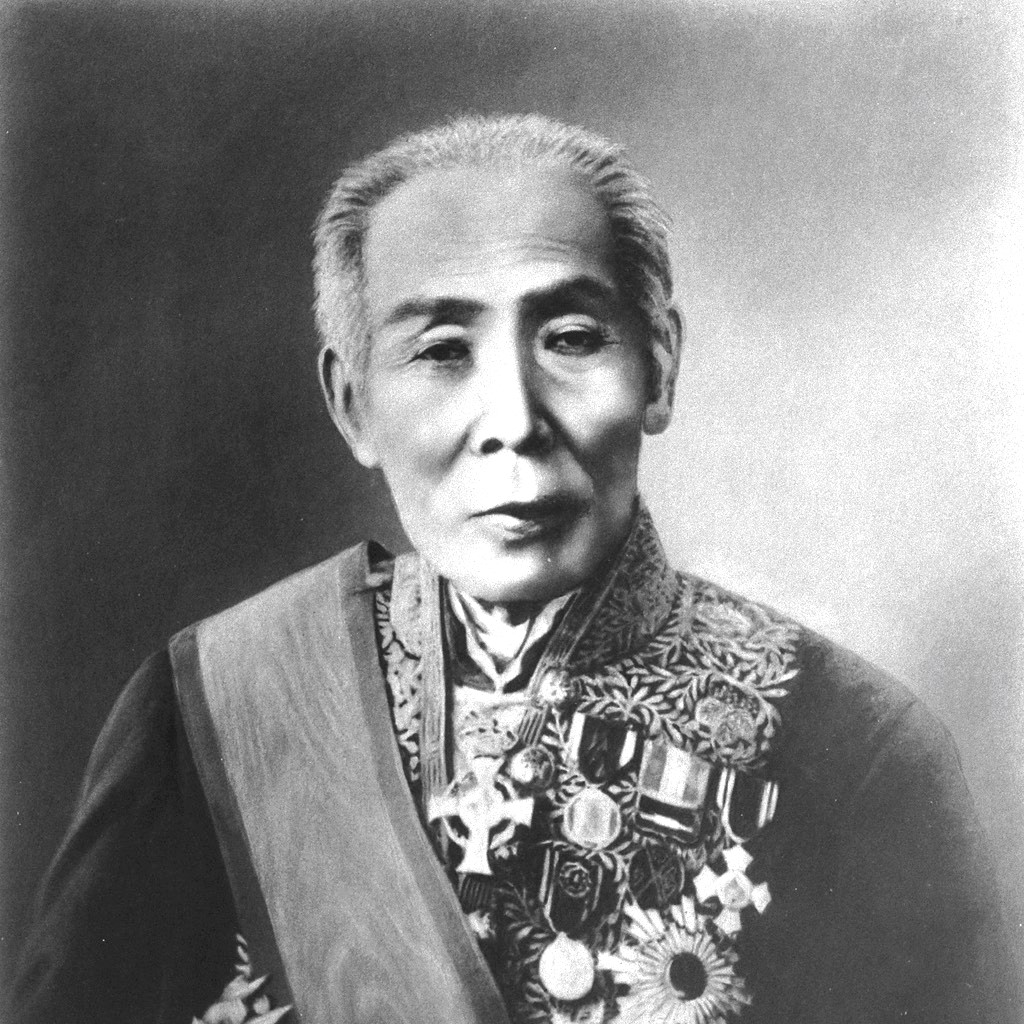
@NDL Digital Collections
The Japanese Red Cross Society was founded in 1877 as a relief organization called "Hakuai-sha" during the Seinan War, the last civil war in Japan. The Seinan War lasted seven months of fierce fighting between the government forces and Saigo's army, led by Saigo Takamori (1828-1877, 西郷隆盛), a former army general. Sano Tsunetami (1823-1902, 佐野常民), a samurai who later became the first president of the Japanese Red Cross Society, saw the devastation and founded the Hakuai-sha Society to provide war relief from both sides. During this time, Empress Shôken and Empress Dowager Eisho, the empress of the previous Emperor Koken, personally made and donated gauze. In 1886, when Japan became a signatory to the Geneva Convention, the Hakuai-sha Society was renamed the Japanese Red Cross Society, which it has remained to this day. It is said that Empress Shôken had the foresight to see the importance of the Japanese Red Cross Society's activities in the world in the near future. It is said that she wished to inherit the will of the Empress Komyo (701-760, 光明皇后) of Emperor Shomu (701-756, 聖武天皇), who established the Seyakuin (hospital) for the poor during the Nara period (710-794).
Aizu women, who witnessed the siege at the end of the Edo period, played an active role in the Red Cross.

@NDL Digital Collections
The Empress's dedication to women's education blossomed when Japan's first five female students returned from the United States in 1871. Among them, Yamakawa Sutematsu (1860-1919, 山川捨松), a daughter of Aizu domain’s chief retainer, then only eight years old, was a girl who joined her sisters in the final siege at Aizu Wakamatsu Castle against the Meiji government forces during the Boshin War alongside her sisters. The intense siege lasted for a month until the castle fell on November 6, 1868. Yamakawa Sayo (1852-1931, 山川操), Sutematsu's sister, vividly recounted their ordeal: "Balls from cannons and rifles flew into the castle, bursting open and blowing tiles off the roof. During their making rice balls and bullets, blood flowed everywhere, the wounded groaned, and lifeless bodies lay scattered on the floor." Later, Sayo became Empress Shôken's French interpreter and Gon-Naishinojo, a high court lady. Meanwhile, Sutematsu qualified as a nurse and spearheaded fundraising efforts to establish Japan's first female nursing school called Yushi Kyoritsu Tokyo Hospital (Now, The Jikei University Hospital). She founded the Japanese Red Cross Lady's Volunteer Nursing Association and, during the Sino-Japanese War (1894-1895) and the Russo-Japanese War (1904-1905), she cared for the wounded and rallied the wives of government officials to help make bandages. It can be said that the experience of this siege led Sutematsu to the world of rescue.
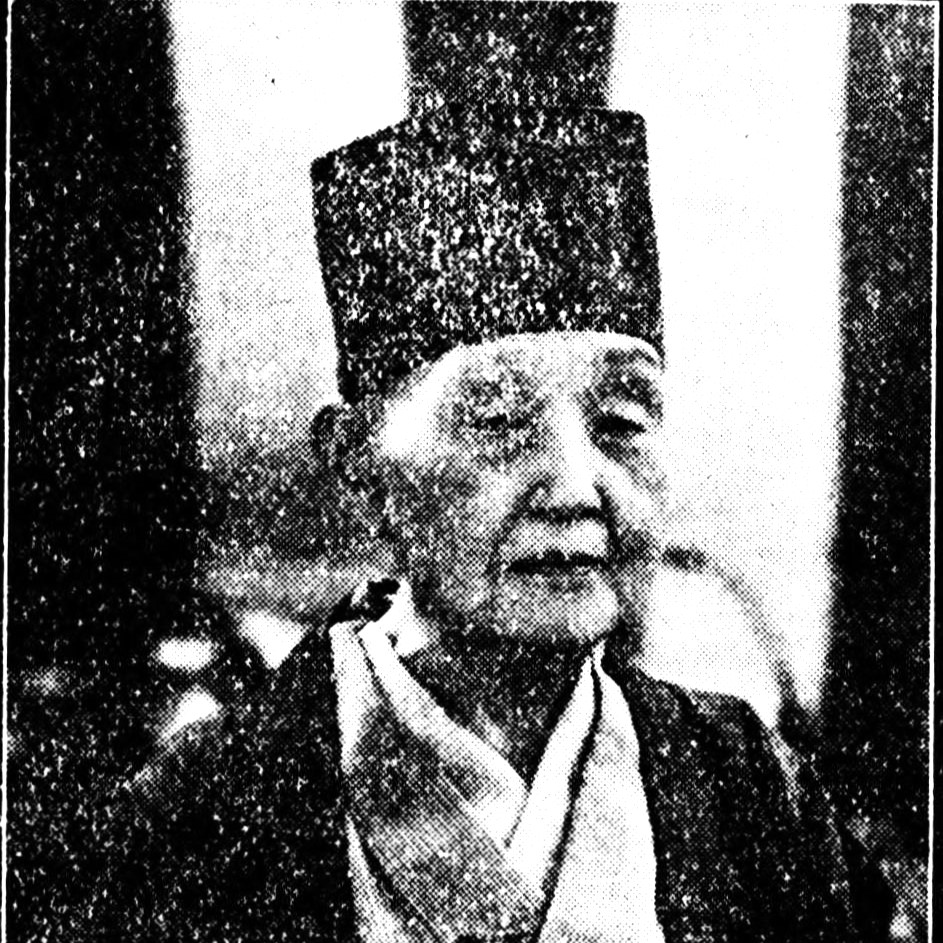
@NDL Digital Collections
Niijima Yae (1845-1932, 新島八重), the daughter of an artillery instructor of the Aizu domain, also fought in the siege of Aizu Wakamatsu Castle. She cut her hair, dressed as a man, and fought hard with a sword and a Spencer Carbine loaded with 100 bullets. A constant barrage of artillery shells was at the castle day and night, some days as many as 2,500 shells, with an average of more than 1,000 shells per day. After the fall of the castle, during the Meiji era, Yae and her husband devoted themselves to the establishment of Doshisha University and the education of women. After her husband's death, Yae worked as a volunteer nurse for the Lady's Volunteer Nursing Association of the Japanese Red Cross Society, providing aid in army hospitals during the Sino-Japanese and Russo-Japanese wars.
Sometimes referred to as "strong-willed women," these two women chose their paths in life, overcoming difficulties in the turbulent Meiji era, and dedicating their later years to the philanthropic and charitable activities of the Japanese Red Cross Society.
115 Recipients of the Florence Nightingale Medal of Honor
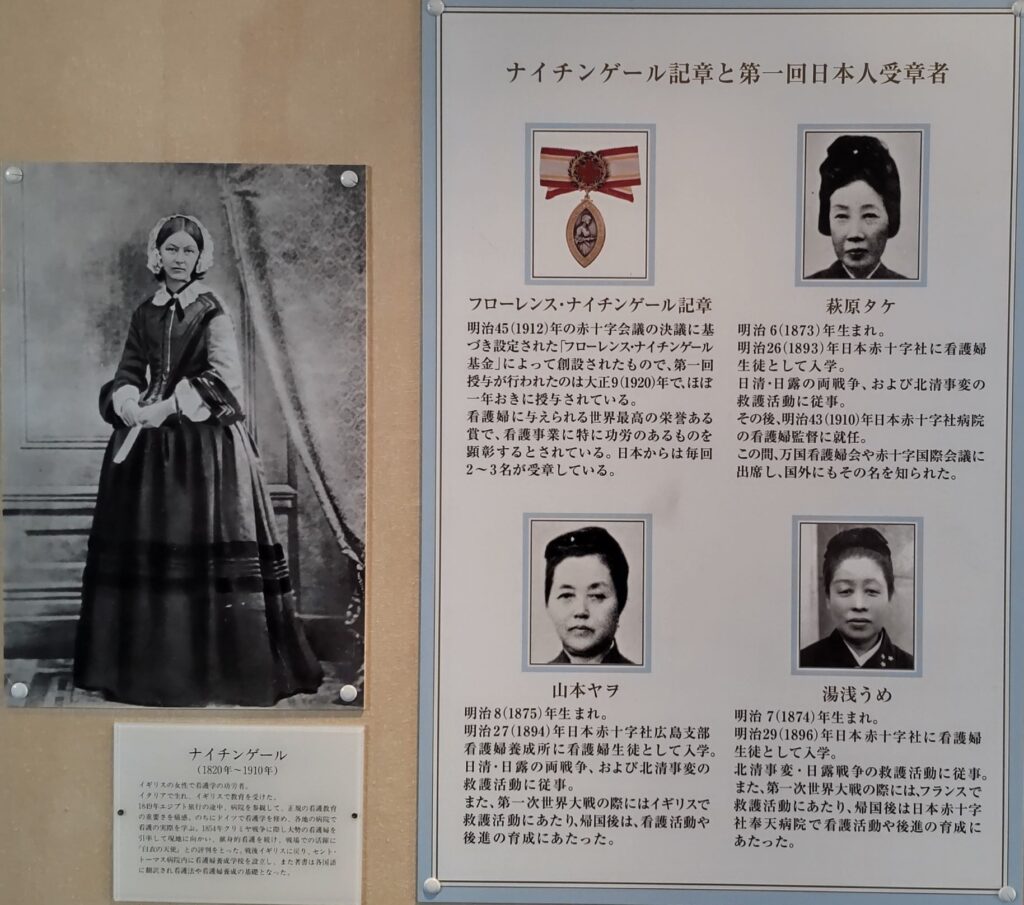
@Museum Meiji-Mura
In 1920, Japan's first recipient of the Florence Nightingale Medal, Hagiwara Take, for wartime relief during the Sino-Japanese and Russo-Japanese wars, Hokushin Incident, and disaster relief during the Sanriku Tsunami of 8.2-8.5M, Yamamoto Yawo, Yuasa Ume, and three others led a total of 115 Japanese recipients, the most in the world to date. Their benevolent portraits are displayed in one of the wards of the Japanese Red Cross Central Hospital, which has been moved to the Museum Meiji-Mura.
We invite you to feel the spirit of Empress Shôken, who paved the way for peacetime relief in the international community in the new Meiji era, and other Meiji women who have devoted themselves to the Japanese Red Cross activities at Meiji-Mura. In 2024, the 110th Empress Shôken Memorial Ceremony to remember her virtues will be held at Meiji Jingu Shrine on April 11.
- Interviewed Yuko Nakano (Assistant Curator of Museum Meiji-Mura)
Empress Shôken & Japanese Red Cross Society Timeline
| 1849 | Empress Shôken was born | Age =1 | Edo Period |
| 1852 | Emperor Meiji was born | 4 | |
| 1867/01 | Emperor Komei passed away | 20 | |
| 1867 | Emperor Meiji was ascended to the throne. Shôken was asuumed Empress | 20 | |
| 1867/11 | Taisei Hokan, Tokugawa's political power was officially returned to Emperor Meiji | 20 | |
| 1868/01 | The Boshin War started at Toba-Fushimi | 21 | |
| 1868/04 | Edo castle surrendered without bloodshed to Imperial Army | 21 | |
| 1868/10 | Eenthronement of the Emperor Meiji | 21 | |
| 1868/10 | The Meiji Restoration | 21 | |
| 1868/11 | Aizu Wakamatsu casle surrendered to Imperial Army and Aizu War ended | 21 | Meiji Era |
| 1869/06 | Boshin War ended at Hakodate | 22 | |
| 1871 | Empress Shôken worked as silkworm breeder at the Fukiage Imperial Gardens | 23 | |
| 1873 | Empress Shôken visited the Tomioka Silk Mill | 25 | |
| 1875 | Empress Shôken visited Tokyo Women's Normal School for its opening ceremony | 27 | |
| 1877 | Seinan War | 29 | |
| 1877 | Hakuai-sha was established | 29 | |
| 1883 | Empress Shôken gave 300 yen to Hakuai-sha | 36 | |
| 1886 | Empress Shôken wore the western clothes | 38 | |
| 1887 | Hakuai-sha changed its name to Japanese Red Cross Society | 39 | |
| 1887 | Empress Shôken gave her Waka to a noblewomen school | 39 | |
| 1894-1895 | Sino-Japanese War | 46 | |
| 1904-1905 | Russo-Japanese War | 56 | |
| 1912/04 | Emperor Shôken gave 100,000 yen to Red Cross Society | 64 | |
| 1912/07 | Emperor Meiji passed away | 64 | Taisho Era |
| 1914/04 | Empress Shôken passed away | 66 | |
| 1914/08 | The World War 1 | 66 | |
| 1921 | The first distribution of The Empress Shôken Fund, | - |
Recommendations to visit
The Museum Meiji-Mura
- Access: Take the Meiji Mura bus at Meitetsu Bus Center of Nagoya Station and take the Meiji Mura bus
Meiji Jingu Shrine
- Access: A 5 minutes walk from JR Yamanote Line Harajuku Station

